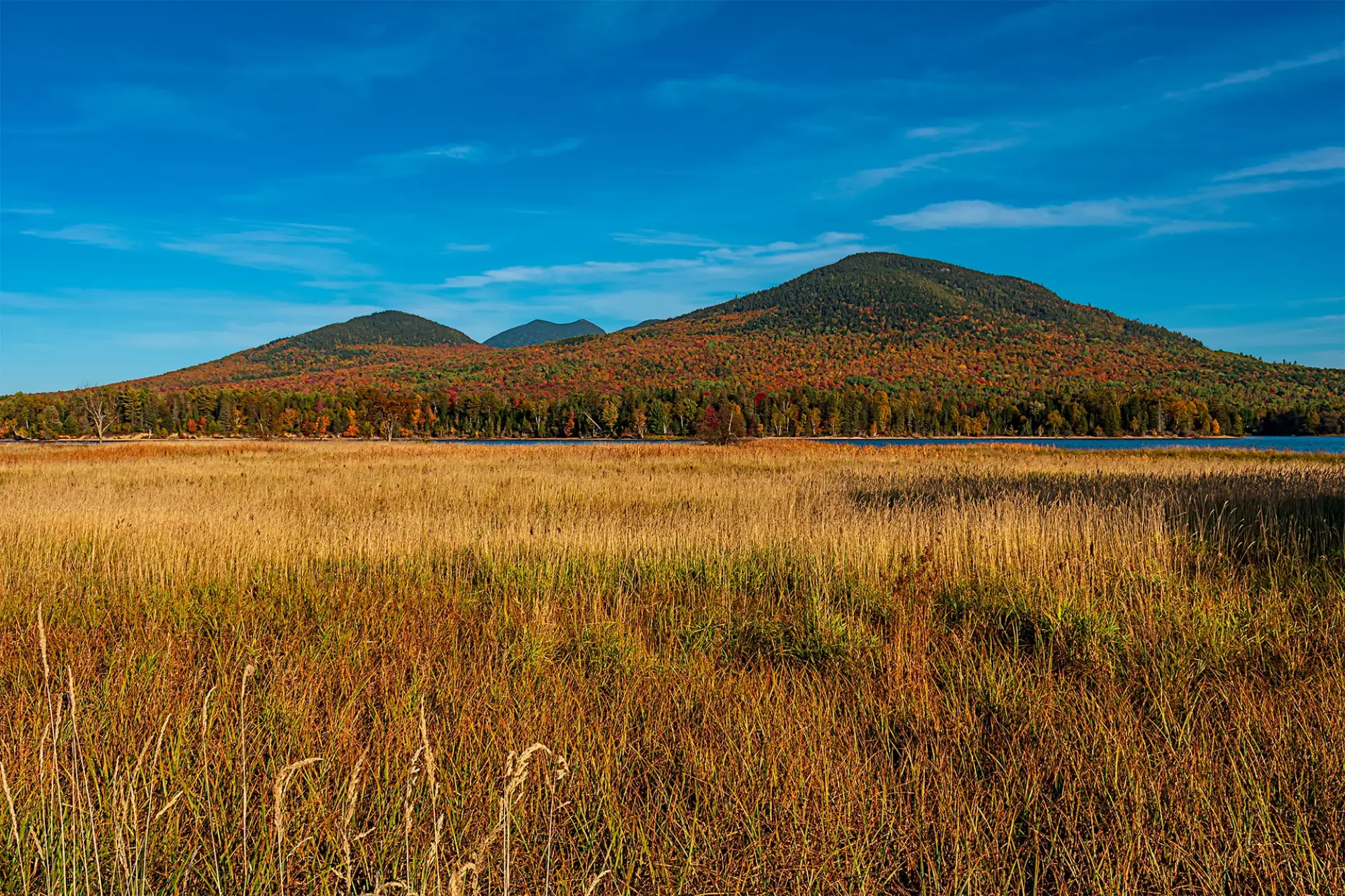
The coast has its charm, but sometimes you’ve got to trade salt air for mountain air. That’s how we ended up leaving Northport with a thermos of coffee, a bag of snacks, and a loose plan to head west. The drive itself is half the story—rolling inland, farm fields flashing by, the hills getting sharper with every mile. Playlists shuffled, snacks vanished quicker than expected (always bring more than you think), and somewhere along the way, you realize: Maine isn’t just a coastline.
Western Maine is a different kind of beautiful. The kind that sneaks up on you, one ridge at a time. It’s got big views, layered history, and enough fall color to make even the most stubborn New Englander stop and stare.

First stop: Height of Land, a roadside pull-off with a view that doesn’t need hype. Spread out below is Mooselookmeguntic Lake—water shimmering, ridges rolling into the distance, trees burning red, orange, and gold. It’s the kind of view that makes you glad you left the coast behind, even if you’re shoulder to shoulder with other leaf-peepers this time of year.
Photographers—this is where the wide-angle lens earns its keep. Layered ridges in autumn colors look almost painted when the light hits right. Even with the crowd, the view feels like it belongs to you for a moment.

From there, we wound our way up to Quill Hill. The gravel road climbs steadily, but once you’re at the top, it’s nothing but sky. A full 360° panorama—mountains, valleys, lakes, and forests as far as you can see.
What struck me most wasn’t just the scale, but how accessible it is. You don’t need a grueling climb or mountain goat stamina—just four wheels and a willingness to slow down. It’s the kind of spot where you want to sit on the hood of the car until the light fades, letting the colors shift while the day unravels around you.

Our last stop was Flagstaff Lake, and it’s a place that carries more than just reflections. Today, it’s calm water with mountains mirrored back at you. But in the 1940s, this lake swallowed whole towns—Flagstaff Village and Dead River Plantation—when the Long Falls Dam was built.
Standing on the shore, you can’t help but think about the families who once called this place home. It’s beautiful, yes, but it’s also layered. A reminder that landscapes hold memory as much as scenery.
Long before roads and dams, this land was home to the Wabanaki Confederacy, including the Abenaki, Penobscot, Passamaquoddy, Maliseet, and Mi’kmaq peoples. For thousands of years, they traveled these valleys to fish, hunt, and gather, following the rivers as highways and the ridgelines as guides.
One of the most important Abenaki villages was Norridgewock, located on the Kennebec River not far from here. Known as Nanrantsouak—“the still water between the rapids”—it was a cultural and spiritual center until colonial conflict forced people from their land.
When you stand at places like Quill Hill or Flagstaff Lake, remember: you’re not just looking at foliage and water—you’re standing in a landscape that has carried stories for centuries.
If you’re chasing color in Western Maine, a few tips:
What I loved most about this trip wasn’t just the views—it was the mix of it all. The drive itself, the conversations in the car, the stops where we had to jostle for space, and the quiet moments when the world opened wide and reminded us why we came.
Western Maine has a way of pulling you in without asking for much. No summit required. Just a willingness to look, to listen, and maybe to pack a few more snacks next time.
Western Maine isn’t about conquering anything. It’s about watching colors shift across ridges, water reflecting the mountains, and realizing that some drives are just as rewarding as the destinations themselves.
Follow along if you want more stories from the trail and the flame. Stay curious. Stay kind. And if you can, get out and walk. Even if it’s just to the end of the driveway.
—Kevin